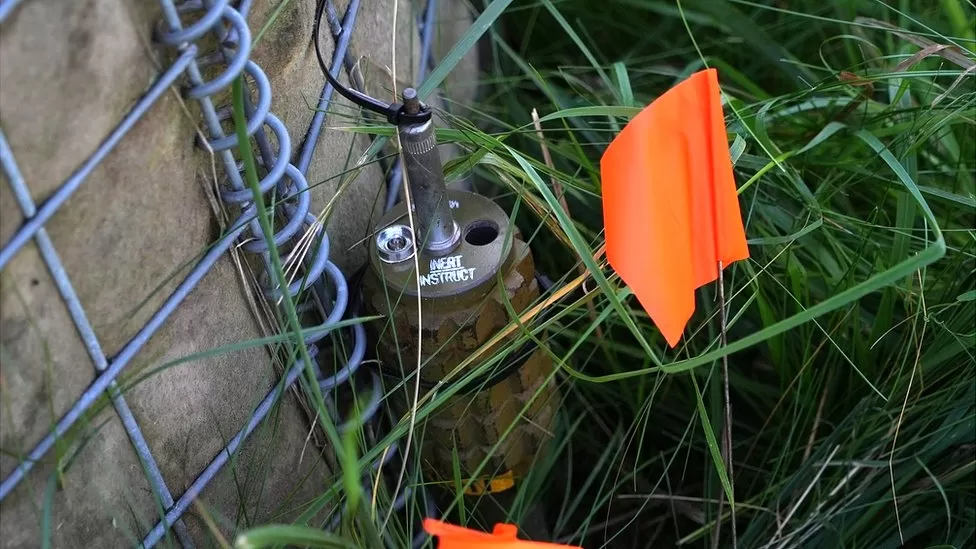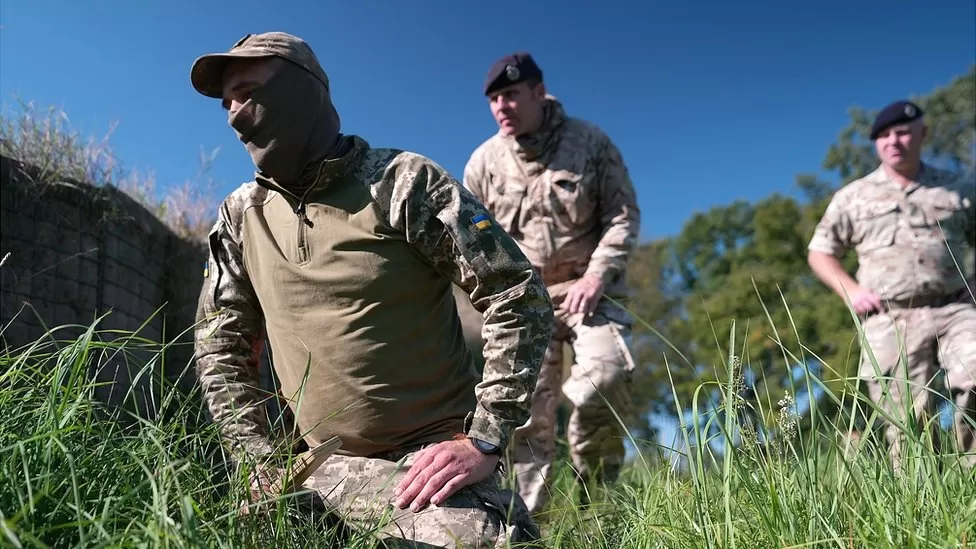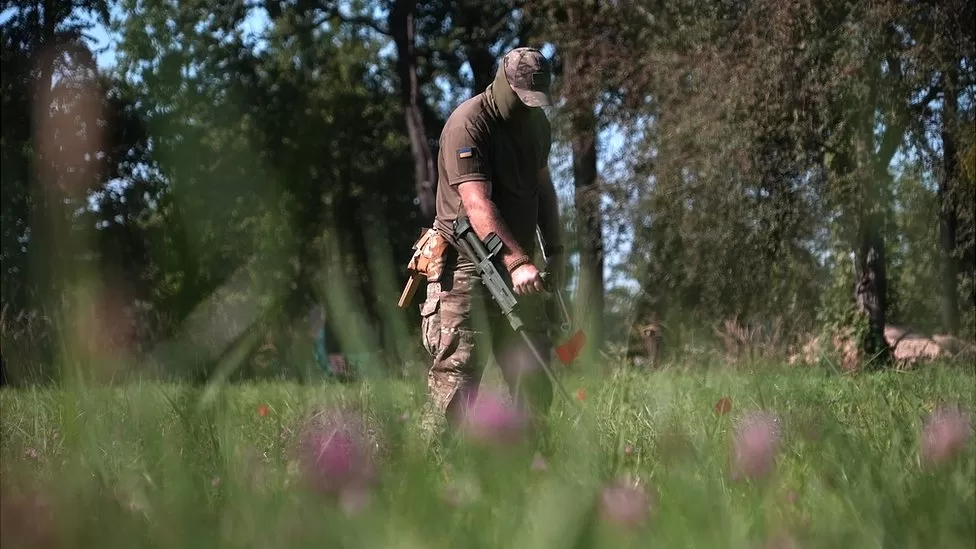Specialist British military bomb disposal teams provide essential training to Ukrainian engineers, equipping them with the skills to clear Russian minefields. Ukraine, currently bearing the unfortunate distinction of being the most heavily mined country globally, has been experiencing a significant slowdown in its military advances due to these mines. Ukraine explicitly requested this specialized training which has been facilitated by British Army sappers combat engineers with firsthand experience in tackling similar challenges, particularly in Afghanistan.
The BBC had the unique opportunity to visit the military base in Poland where this crucial training is taking place. Many of the Ukrainian engineers, such as Denys, have already been tested by battle and possess extensive experience. Denys, who volunteered to fight immediately following Russia’s full-scale invasion in February 2022, had not left Ukraine since 2021, and this visit to Poland marked his first glimpse of passenger jets overhead in nearly two years.
Denys aptly describes Explosive Ordnance Disposal (EOD) as one of the most perilous jobs worldwide, underscoring the pressing need for more sappers. When asked if he has lost friends while performing this hazardous duty, his eyes well up with tears as he nods. He acknowledges the invaluable assistance provided by his British counterparts but emphasizes Ukraine’s ongoing requirement for additional Western support and equipment to clear the Russian minefields. Denys recognizes that even if the war were to cease immediately, it would still take centuries to eliminate the mines that have been laid by Russia.
Russia has been systematically manufacturing and deploying mines on an industrial scale within Ukraine, resulting in minefields spread over an area equivalent to the size of Florida. These minefields can extend up to 10 kilometers deep, with a single square meter potentially concealing up to five explosives.

Also Read: Ukraine’s Advancing Drone Arsenal: Pilots’ Duct Tape Solutions
At the military base in Poland, the British EOD experts, representing the 35 Engineer Regiment, have buried and booby-trapped over 20 dummy devices in a field, putting the Ukrainian trainees’ skills to the test as the training course nears completion. These hidden devices include large cylindrical anti-tank mines, smaller anti-personnel mines, bounding mines that spring from the ground and scatter shrapnel widely, and grenades rigged to trip wires.
Additional concealed threats encompass small butterfly mines designed to maim, mines triggered by vibration rather than direct contact, and mines capable of self-activation to evade detection. Russia’s extensive planning and preparation for these weapons have transformed them into a leading cause of Ukrainian casualties and injuries.
Ihor, a seasoned sapper of four years, laments the loss of over 10 members of his team. Each sapper team may need to contend with more than 100 devices daily, often in areas still exposed to Russian artillery and small arms fire, making nighttime operations a safer option.

Russian forces deliberately target Ukrainian sappers to hinder their progress. Ihor explains that the need to advance frequently leaves them with little time to check for booby traps in the mines. Staff Sgt Kevin Engstrom notes that the British are imparting the gold standard of mine clearance to the Ukrainians, which requires time and patience but admits that when facing immediate gunfire threats, a slower approach may not always be feasible.
The threat faced by sappers, as experienced in Afghanistan, continues to evolve. Denys highlights the disturbing trend of discovering booby-trapped bodies of deceased Russian soldiers in liberated areas. The Russians stack anti-tank mines to create larger explosions and place smaller anti-personnel mines atop vehicle mines to trigger bigger blasts. Trip wires are often cunningly concealed in the grass, and mines are sometimes hung from trees with hooks, aiming to ensnare the uniforms and equipment of advancing troops.
Clearing a path through these perilous hidden traps can be painstakingly slow. Ukrainian sappers initially employ Vallons, resembling metal detectors, to create safe routes. Britain has already supplied Ukraine with 1,500 Vallons. When the Vallon alerts them, sappers must painstakingly examine the threat on their hands and knees, requiring meticulous manual work.
Denys, with admiration, watches ants crawling on the ground before spotting a trip wire, jesting, “You guys make it hard.” British trainers are impressed by the speed and precision of the Ukrainian sappers, despite the challenges they face with their equipment.
Making the device safe is not the primary challenge; Ihor was already familiar with the types of mines used by the Russians before the invasion. However, the Russians have been making the disarmament process more intricate. British instructors liken it to solving a puzzle or playing chess.
The true challenge lies in identifying the minefields’ locations and their strategic purposes. These minefields are often deliberately placed to lure in troops who can then be targeted by artillery. Mines are frequently booby-trapped, requiring a meticulous and methodical approach.
This training initiative began only last November, with each course lasting a few weeks and accommodating a limited number of experienced Ukrainian sappers. This underscores the high demand for their skills on the front lines.

In Southern Ukraine, there have been breakthroughs in breaching the initial lines of Russian defenses, but further Russian minefields and other obstacles still stand in their path. Ihor and his team of sappers are well aware of the monumental task ahead but remain resolute, understanding that they have no other choice.
At the very least, the British instructors hope this training will save precious Ukrainian lives in the ongoing conflict.

